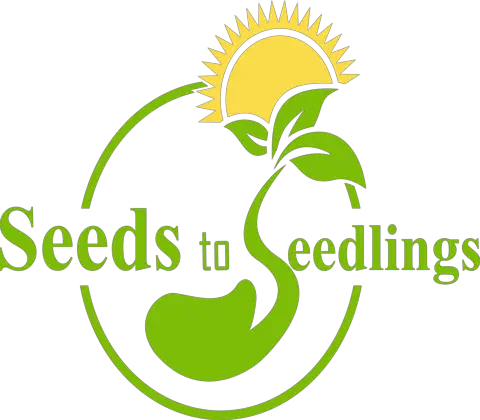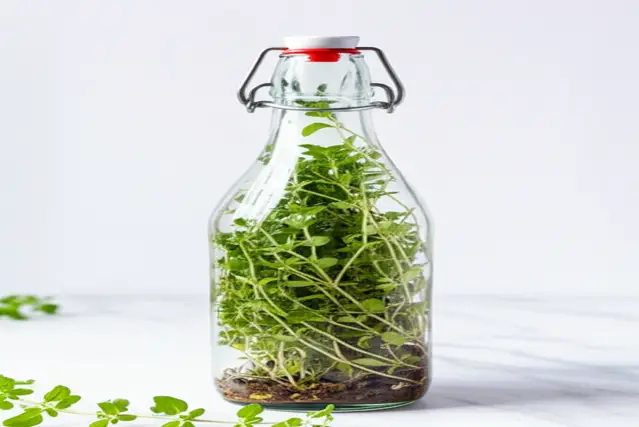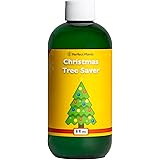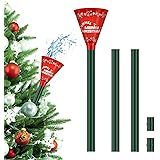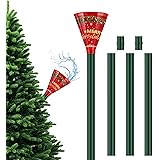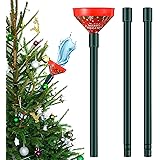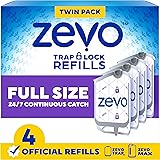Growing your own herbs at home can be incredibly rewarding. Fresh oregano, with its pungent aroma and flavor, is a must-have for any kitchen. While traditional gardening methods are common, growing oregano in a glass bottle offers a unique and space-saving alternative.
This comprehensive guide will walk you through everything you need to know to successfully grow oregano in a glass bottle, from selecting the right bottle to harvesting your flavorful leaves.
Why Grow Oregano in a Glass Bottle?
There are several compelling reasons to consider growing oregano in a glass bottle:
- Space Saving: Perfect for small apartments, balconies, or anyone with limited gardening space.
- Aesthetic Appeal: A glass bottle filled with vibrant oregano adds a decorative touch to your home.
- Controlled Environment: Easier to manage factors like watering and light compared to outdoor gardening.
- Year-Round Harvest: Growing indoors allows you to enjoy fresh oregano regardless of the season. You can even learn about how to grow herbs indoors year-round to ensure a continuous supply.
- Reduced Pest Issues: Indoor growing minimizes the risk of common garden pests.
Choosing the Right Glass Bottle
The type of glass bottle you choose plays a significant role in the success of your oregano plant. Here’s what to consider:
- Size: Opt for a bottle that is at least 6 inches in diameter and 8 inches tall. This provides enough space for the roots to grow.
- Shape: Wider bottles are generally better as they provide more surface area for the plant to grow. Avoid bottles with narrow necks, as they can make planting and maintenance difficult.
- Material: Clear glass is ideal as it allows light to reach the soil. Avoid colored glass, which can filter out essential light.
- Cleanliness: Ensure the bottle is thoroughly cleaned before planting to prevent the growth of mold or bacteria.
- Upcycling: Consider repurposing old wine bottles, mason jars, or even large pickle jars. Get creative and give those bottles a new life! You might even consider drawing inspiration from guides on how to grow dill in a chipped bowl for repurposing unconventional containers.
Essential Supplies for Growing Oregano in a Bottle
Before you start planting, gather the following supplies:
- Oregano Seeds or Cuttings: Choose a variety of oregano that you enjoy.
- Potting Mix: A well-draining potting mix is crucial. Avoid using garden soil, which can become compacted in a bottle.
- Gravel or Pebbles: To create a drainage layer at the bottom of the bottle.
- Water: Filtered or distilled water is best to avoid mineral buildup.
- Spray Bottle: For misting the plant.
- Small Trowel or Spoon: For planting the oregano.
- Optional: Liquid fertilizer specifically formulated for herbs.
Step-by-Step Guide to Growing Oregano in a Glass Bottle
Follow these steps to successfully grow oregano in your glass bottle:

1. Prepare the Bottle
Thoroughly clean the glass bottle with soap and water. Rinse it well to remove any residue. Add a 1-2 inch layer of gravel or pebbles to the bottom of the bottle to provide drainage. This helps prevent water fromlogging the soil, which can lead to root rot.
2. Add the Potting Mix
Fill the bottle with a high-quality potting mix, leaving about an inch of space at the top. Gently press down on the soil to remove any air pockets. The ideal best soil for propagating snake plant shares similar characteristics with soil suitable for oregano, focusing on good drainage and aeration.
3. Planting Oregano Seeds
If you are starting from seeds, sprinkle them evenly over the surface of the potting mix. Cover the seeds with a thin layer of soil. Gently mist the soil with water to moisten it. Cover the top of the bottle with plastic wrap to create a humid environment, which will help the seeds germinate.
4. Planting Oregano Cuttings
If you are using cuttings, take a 4-6 inch cutting from a healthy oregano plant. Remove the leaves from the bottom inch of the cutting. Dip the cut end into rooting hormone (optional, but recommended). Make a small hole in the potting mix and insert the cutting. Gently press the soil around the cutting to secure it. Mist the cutting with water and cover the top of the bottle with plastic wrap to maintain humidity.
5. Providing Light
Place the bottle in a location that receives at least 6-8 hours of sunlight per day. A south-facing window is often ideal. If you don’t have enough natural light, you can supplement with a grow light. It’s interesting to consider can plants photosynthesize with led light , especially during the darker months. Also, explore if can led light replace sunlight for plants.
6. Watering
Keep the soil consistently moist, but not waterlogged. Water when the top inch of soil feels dry to the touch. Use a spray bottle to mist the plant regularly, especially if the air is dry. Ensure there is adequate drainage to avoid cactus root rot, though oregano prefers slightly drier conditions.
7. Maintaining Humidity
Oregano prefers moderate humidity. If the air is dry, you can increase humidity by placing a tray of water near the bottle or using a humidifier. Remove the plastic wrap once the seeds have germinated or the cuttings have rooted.
8. Fertilizing
Fertilize the oregano every 2-4 weeks with a liquid fertilizer specifically formulated for herbs. Follow the instructions on the fertilizer label. Avoid over-fertilizing, which can burn the plant.
9. Pruning and Harvesting
Prune the oregano regularly to encourage bushier growth. Pinch off the tips of the stems to promote branching. You can start harvesting oregano leaves once the plant is about 6 inches tall. Simply snip off the leaves as needed. Regular pruning will also help to prevent the plant from becoming leggy. You can even explore methods on how to prune monster deliciosa for similar pruning techniques.
Choosing Between Seeds and Cuttings
You can start oregano from either seeds or cuttings. Each method has its advantages and disadvantages:
Seeds
Starting from seeds can be a rewarding experience, allowing you to witness the entire growth process from germination to harvest. However, it can also be slower than starting from cuttings.
Advantages of Starting from Seeds:
- Wider variety of oregano types available.
- More affordable than buying established plants or cuttings.
- The satisfaction of growing a plant from seed.
Disadvantages of Starting from Seeds:
- Slower to mature compared to cuttings.
- Requires more patience and attention during the germination phase.
- Lower success rate compared to cuttings, especially for beginners.
Cuttings
Starting from cuttings is a quicker and more reliable way to propagate oregano. It allows you to replicate a specific variety of oregano and enjoy a faster harvest.
Advantages of Starting from Cuttings:
- Faster to mature compared to seeds.
- Higher success rate, especially for beginners.
- Ensures you are growing the exact variety of oregano you want.
Disadvantages of Starting from Cuttings:
- Requires access to an established oregano plant.
- Limited variety of oregano types available.
- May be more expensive than starting from seeds.
Selecting the Right Potting Mix
The potting mix you choose is crucial for the health of your oregano plant. Here are some key factors to consider:
- Drainage: Oregano prefers well-draining soil. Choose a potting mix that contains perlite, vermiculite, or sand to improve drainage.
- Nutrients: A good potting mix should contain essential nutrients to support plant growth. Look for a mix that is specifically formulated for herbs.
- pH Level: Oregano prefers a slightly acidic to neutral pH level (6.0-7.0).
- Avoid Garden Soil: Garden soil is too heavy and compacted for growing in a bottle. It can also contain pests and diseases.
You can also make your own potting mix by combining equal parts of:
- Peat moss or coconut coir
- Perlite or vermiculite
- Compost
Watering Techniques for Oregano in a Bottle
Proper watering is essential for the health of your oregano plant. Overwatering can lead to root rot, while underwatering can cause the plant to wilt.
Here are some tips for watering oregano in a bottle:
- Check the Soil Moisture: Before watering, check the soil moisture by inserting your finger into the top inch of soil. If it feels dry, it’s time to water.
- Water Thoroughly: When watering, water thoroughly until excess water drains out of the drainage layer at the bottom of the bottle.
- Avoid Overwatering: Overwatering is a common mistake. Make sure the soil is well-draining and avoid letting the plant sit in standing water.
- Use a Spray Bottle: Use a spray bottle to mist the plant regularly, especially if the air is dry.
- Water in the Morning: Water in the morning to allow the leaves to dry before nightfall, which can help prevent fungal diseases.
Providing Adequate Light
Oregano needs at least 6-8 hours of sunlight per day to thrive. If you don’t have enough natural light, you can supplement with a grow light. Here are some tips for providing adequate light to your oregano plant:
- South-Facing Window: Place the bottle in a south-facing window, which typically receives the most sunlight.
- Rotate the Bottle: Rotate the bottle regularly to ensure that all sides of the plant receive equal light. This will help prevent the plant from leaning towards the light source.
- Use a Grow Light: If you don’t have enough natural light, use a grow light to supplement. Place the grow light about 12 inches above the plant.
- Adjust Light Intensity: Adjust the light intensity as needed. If the leaves start to turn yellow or brown, the plant may be getting too much light. If the plant is leggy and spindly, it may not be getting enough light.
Fertilizing Your Oregano Plant
Oregano needs regular fertilization to stay healthy and productive. Here are some tips for fertilizing your oregano plant:
- Use a Liquid Fertilizer: Use a liquid fertilizer specifically formulated for herbs.
- Fertilize Every 2-4 Weeks: Fertilize the oregano every 2-4 weeks during the growing season (spring and summer).
- Follow the Instructions: Follow the instructions on the fertilizer label.
- Avoid Over-Fertilizing: Over-fertilizing can burn the plant. If you notice white crusts forming on the soil surface, you may be over-fertilizing.
- Flush the Soil: If you suspect that you have over-fertilized, flush the soil with water to remove excess fertilizer.
Pruning and Harvesting Techniques
Pruning and harvesting are essential for maintaining a healthy and productive oregano plant. Here are some tips for pruning and harvesting:
- Prune Regularly: Prune the oregano regularly to encourage bushier growth. Pinch off the tips of the stems to promote branching.
- Harvest Leaves as Needed: You can start harvesting oregano leaves once the plant is about 6 inches tall. Simply snip off the leaves as needed.
- Use Sharp Scissors or Pruners: Use sharp scissors or pruners to avoid damaging the plant.
- Harvest in the Morning: Harvest leaves in the morning, after the dew has dried, for the best flavor.
- Dry or Freeze Leaves: Dry or freeze the harvested leaves to preserve them for later use.
Common Problems and Solutions
Even with the best care, you may encounter some problems when growing oregano in a glass bottle. Here are some common problems and solutions:
- Yellowing Leaves: Yellowing leaves can be caused by overwatering, underwatering, nutrient deficiencies, or pests. Adjust your watering schedule, fertilize the plant, and inspect for pests. It’s also worth checking if the cause could be similar to cast iron plant turning yellow.
- Wilting Leaves: Wilting leaves can be caused by underwatering, heat stress, or root rot. Water the plant thoroughly, move it to a cooler location, and ensure the soil is well-draining.
- Leggy Growth: Leggy growth is caused by insufficient light. Move the plant to a brighter location or supplement with a grow light.
- Pests: Common pests of oregano include aphids, spider mites, and whiteflies. Treat infestations with insecticidal soap or neem oil.
- Root Rot: Root rot is caused by overwatering. Ensure the soil is well-draining and avoid letting the plant sit in standing water. If root rot is severe, you may need to repot the plant into fresh soil.
Knowing how to address issues like holes in dracaena leaves can often help in diagnosing similar problems in other plants.
Choosing the Right Oregano Variety
There are several varieties of oregano to choose from, each with its unique flavor and characteristics. Here are some popular oregano varieties:
| Variety | Flavor | Characteristics | Uses |
|---|---|---|---|
| Greek Oregano | Strong, pungent | Small, gray-green leaves; drought-tolerant | Greek cuisine, pizza, sauces |
| Italian Oregano | Milder, sweeter | Larger, green leaves | Italian cuisine, pasta dishes, salads |
| Mexican Oregano | Citrusy, earthy | Strong flavor; not true oregano | Mexican cuisine, chili, salsa |
| Golden Oregano | Mild, slightly bitter | Golden-yellow leaves; ornamental | Garnish, salads |
Choose a variety that you enjoy and that is well-suited to your growing conditions.
Creative Uses for Your Homegrown Oregano
Once you have a bountiful harvest of homegrown oregano, the possibilities are endless! Here are some creative ways to use your fresh oregano:
- Culinary Uses: Use fresh oregano in your favorite recipes, such as pizza, pasta sauces, soups, stews, and salads.
- Herbal Teas: Make a soothing herbal tea by steeping fresh oregano leaves in hot water.
- Infused Oils: Infuse olive oil with oregano to create a flavorful cooking oil.
- Vinegars: Add oregano to vinegar to create a flavorful salad dressing or marinade.
- Potpourri: Dry oregano leaves and add them to potpourri to create a fragrant home scent.
- Medicinal Uses: Oregano has been used for centuries for its medicinal properties. It is believed to have antibacterial, antiviral, and anti-inflammatory effects.
If you enjoy growing herbs, you might also be interested in why should you keep rosemary by your garden gate. You may also consider growing basil in a similar manner by reading how to grow basil in a mason jar from seeds. You can also learn about can you plant lemon balm and cilantro together for companion planting.
Growing Oregano Hydroponically in a Glass Bottle
While growing oregano in soil is the most common method, you can also grow it hydroponically in a glass bottle. Hydroponics is the method of growing plants without soil, using a nutrient-rich water solution. Here’s how to do it:

- Prepare the Bottle: Clean the glass bottle and add a layer of gravel or pebbles to the bottom for support.
- Nutrient Solution: Use a hydroponic nutrient solution specifically formulated for herbs. Follow the instructions on the label for dilution.
- Oregano Cuttings: Take oregano cuttings and place them in the bottle, ensuring the cut ends are submerged in the nutrient solution.
- Support the Cuttings: Use a piece of foam or a net pot to support the cuttings and keep them from falling into the bottle.
- Light: Place the bottle in a location that receives at least 6-8 hours of sunlight per day or supplement with a grow light.
- Change the Solution: Change the nutrient solution every 1-2 weeks to prevent the buildup of algae and bacteria.
- Monitor the pH: Monitor the pH of the nutrient solution and adjust as needed. Oregano prefers a slightly acidic to neutral pH level (6.0-7.0).
Adapting the Technique: Other Herbs to Grow in Bottles
Once you master growing oregano in a bottle, you can experiment with other herbs. Many herbs thrive in confined spaces, making them suitable for bottle gardens. Here are a few ideas:
- Mint: Known for its vigorous growth, mint benefits from being contained in a bottle to prevent it from spreading.
- Chives: These onion-flavored herbs are easy to grow and add a subtle flavor to many dishes.
- Parsley: Whether curly or flat-leaf, parsley is a versatile herb that adapts well to indoor bottle gardening.
- Thyme: This herb prefers well-drained soil and plenty of sunlight, making it a good candidate for a bottle garden.
Just remember to research the specific needs of each herb to ensure its successful growth in a bottle.
Aesthetics and Decoration: Enhancing Your Bottle Garden
Besides providing fresh herbs, a bottle garden can be a stylish addition to your home decor. Here are some ways to enhance the aesthetic appeal of your oregano bottle garden:
- Bottle Selection: Choose bottles with unique shapes and sizes for visual interest.
- Labeling: Add decorative labels to identify your herbs.
- Gravel and Stone: Use colorful gravel or decorative stones as a top dressing to add texture and contrast.
- Twine and Ribbon: Wrap twine or ribbon around the neck of the bottle for a rustic or elegant touch.
- Lighting: Place your bottle garden near a window or under a grow light to showcase the vibrant green of the oregano.
A well-designed bottle garden not only provides fresh herbs but also serves as a conversation piece and a reflection of your personal style.
Frequently Asked Questions
Can I grow oregano in a bottle without drainage holes?
Yes, you can. However, it’s crucial to create a drainage layer at the bottom of the bottle using gravel or pebbles to prevent water fromlogging the soil and causing root rot. Monitor the moisture levels carefully and water sparingly.
How often should I water my oregano plant in a bottle?
Water when the top inch of soil feels dry to the touch. The frequency will depend on the humidity, temperature, and light levels in your home. In general, water thoroughly but allow the soil to dry out slightly between waterings. The best way to prevent overwatering is to consider do pothos need drainage similar conditions.
What type of fertilizer should I use for oregano in a bottle?
Use a liquid fertilizer specifically formulated for herbs. Follow the instructions on the fertilizer label. A balanced fertilizer with equal parts nitrogen, phosphorus, and potassium is a good choice. You may also want to consider the advice from how to choose fertilizer.
How much sunlight does oregano need when grown in a bottle?
Oregano needs at least 6-8 hours of sunlight per day to thrive. Place the bottle in a south-facing window or supplement with a grow light if needed. The effects of insufficient light can be considered similar to that of mostera, which leads to leggy growth.
Can I grow oregano from cuttings in a bottle?
Yes, you can easily propagate oregano from cuttings. Take a 4-6 inch cutting from a healthy plant, remove the lower leaves, and place the cutting in water or directly into the potting mix. Keep the soil moist and the cutting should root within a few weeks. Propagation methods are often similar, so consider referring to how to propagate plants from cuttings for guidance.
What are some common pests that affect oregano?
Common pests of oregano include aphids, spider mites, and whiteflies. Inspect your plants regularly and treat infestations with insecticidal soap or neem oil. Make sure to follow the instructions on the product label.
How do I harvest oregano leaves from a bottle garden?
Once the plant is about 6 inches tall, you can start harvesting oregano leaves as needed. Simply snip off the leaves with scissors or pruners. Harvest in the morning for the best flavor. You can also how to take care of tomato plants to ensure a good growth.
Can I grow different varieties of oregano in the same bottle?
It’s generally best to grow only one variety of oregano per bottle, as different varieties may have different growth habits and nutrient requirements. Growing multiple varieties together can lead to competition and uneven growth.
How do I prevent oregano from becoming leggy in a bottle?
Leggy growth is usually caused by insufficient light. Make sure your oregano plant is getting enough sunlight or supplement with a grow light. Prune the plant regularly to encourage bushier growth.
How long will oregano last in a bottle?
With proper care, oregano can last for several years in a bottle. However, you may need to repot the plant into a larger bottle as it grows. Regular pruning and fertilization will help to keep the plant healthy and productive.
Conclusion
Growing oregano in a glass bottle is a rewarding and space-saving way to enjoy fresh herbs at home. By following this comprehensive guide, you can successfully cultivate oregano indoors, regardless of your gardening experience. From selecting the right bottle and potting mix to providing adequate light and water, each step is crucial for the health and productivity of your plant. Remember to monitor your oregano regularly, prune as needed, and harvest the flavorful leaves to enhance your culinary creations. Don’t be discouraged by minor setbacks; gardening is a learning process.
Experiment with different varieties, techniques, and decorative touches to create a unique and thriving oregano bottle garden. Embrace the joy of growing your own herbs, and you’ll soon be savoring the fresh, aromatic flavors of homegrown oregano in all your favorite dishes. You may also consider similar projects like terrarium to further enhance your indoor gardening skills.
Happy growing!
Auto Amazon Links: No products found.
Perfect Plants Christmas Tree Saver 8oz. | Easy Use Xmas Tree Preserver Food | Have Healthy Green Christmas Trees All Holiday Season
$9.97 (as of December 3, 2025 00:36 GMT +00:00 - More info- Product prices and availability are accurate as of the date/time indicated and are subject to change. Any price and availability information displayed on [relevant Amazon Site(s), as applicable] at the time of purchase will apply to the purchase of this product.
Kaiedos Christmas Tree Watering Funnel - 39 Inch Funnel, Reusable Design, Makes Watering Your Live Tree a Snap!
$14.99 (as of December 3, 2025 00:36 GMT +00:00 - More info- Product prices and availability are accurate as of the date/time indicated and are subject to change. Any price and availability information displayed on [relevant Amazon Site(s), as applicable] at the time of purchase will apply to the purchase of this product.
Christmas Tree Watering Funnel, Real Christmas Tree Water Long Funnel About 40 Inch, Trees Watering System for Water Indoor Outdoor
$15.99 (as of December 3, 2025 00:36 GMT +00:00 - More info- Product prices and availability are accurate as of the date/time indicated and are subject to change. Any price and availability information displayed on [relevant Amazon Site(s), as applicable] at the time of purchase will apply to the purchase of this product.
IPOOLTENG Christmas Tree Watering Funnel 3 Tube 1 Funnels 40 Inch - 3 Section Plastic Christmas Tree Funnel Waterer, Long Funnels for Watering Trees, Best Gifts for Your Parents to Water Tree
$15.53 (as of December 3, 2025 00:36 GMT +00:00 - More info- Product prices and availability are accurate as of the date/time indicated and are subject to change. Any price and availability information displayed on [relevant Amazon Site(s), as applicable] at the time of purchase will apply to the purchase of this product.
1 Pack Christmas Tree Watering Funnel System, 44 Inch Christmas Tree Watering Stick with Adjustable 3-Section Design, Reusable & Spill-Free, Xmas Plant Waterer Tool for Indoor and Outdoor
$16.99 (as of December 3, 2025 00:36 GMT +00:00 - More info- Product prices and availability are accurate as of the date/time indicated and are subject to change. Any price and availability information displayed on [relevant Amazon Site(s), as applicable] at the time of purchase will apply to the purchase of this product.
Cuisinart 6.5" Cast Iron Smashed Burger Press, Round Flat Edge Grill Press for Crispy Smash Burgers, Burger Tool for Grill and Griddle Accessories, for BBQs and Tailgates
$24.99 (as of December 3, 2025 16:48 GMT +00:00 - More info- Product prices and availability are accurate as of the date/time indicated and are subject to change. Any price and availability information displayed on [relevant Amazon Site(s), as applicable] at the time of purchase will apply to the purchase of this product.
Muddy Mat® Shown on TV Super Absorbent Microfiber Dog Door Mat for Muddy Paws, Non-Slip Washable Pet Rug, Quick Dry Chenille Entryway Carpet, Machine Washable Indoor Outdoor mat, Grey 30"x19"
$19.95 (as of December 3, 2025 16:48 GMT +00:00 - More info- Product prices and availability are accurate as of the date/time indicated and are subject to change. Any price and availability information displayed on [relevant Amazon Site(s), as applicable] at the time of purchase will apply to the purchase of this product.
Snow Joe Premium Enviro Blend Ice Melt, Green-Coated Deicer Crystals, 50 lb - Safer Melter for Vegetation, Concrete & Metals w/ Anti-Corrosion Calcium Magnesium Acetate
$32.97 (as of December 3, 2025 16:48 GMT +00:00 - More info- Product prices and availability are accurate as of the date/time indicated and are subject to change. Any price and availability information displayed on [relevant Amazon Site(s), as applicable] at the time of purchase will apply to the purchase of this product.
OLANLY Dog Door Mat for Muddy Paws 30x20, Absorbs Moisture and Dirt, Absorbent Non-Slip Washable Doormat, Quick Dry Chenille Mud Mat for Dogs, Entry Indoor Entryway Carpet for Inside Floor, Grey
$9.99 (as of December 3, 2025 16:48 GMT +00:00 - More info- Product prices and availability are accurate as of the date/time indicated and are subject to change. Any price and availability information displayed on [relevant Amazon Site(s), as applicable] at the time of purchase will apply to the purchase of this product.
Zevo Flying Insect Trap Official Refill Cartridges - Fits Both Zevo Trap & MAX Indoor Fly Trap - Authentic Trap+Lock Technology to Catch Gnats, House & Fruit Flys (4 Official Refill Cartridges)
$14.97 (as of December 3, 2025 16:48 GMT +00:00 - More info- Product prices and availability are accurate as of the date/time indicated and are subject to change. Any price and availability information displayed on [relevant Amazon Site(s), as applicable] at the time of purchase will apply to the purchase of this product.
